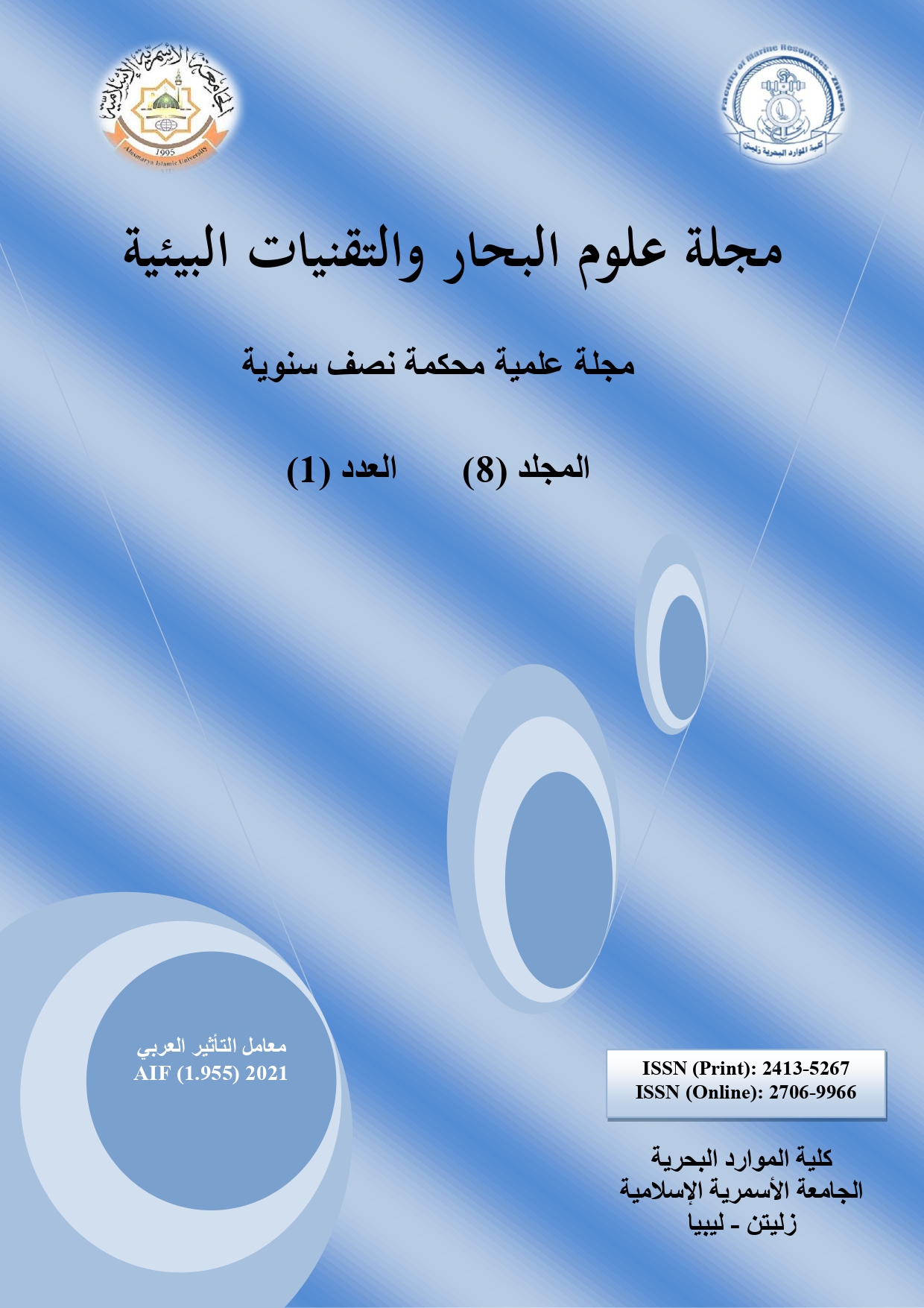دراسة مسامية الصخور الكربوناتية (تكوين ليدام) باستخدام السرود البئرية، حقل الحميد، بحوض سرت الرسوبي، ليبيا.
DOI:
https://doi.org/10.59743/jmset.v8i1.9الكلمات المفتاحية:
المسامية، سرود الآبار، تكوين ليدام، الصخور الكربوناتية، التركيب المعدني، صفة الصخرالملخص
هدف البحث إلى تحديد وحساب أنواع المسامية المختلفة بالطريقة الغير مباشرة (سرود الآبار) لتكوين ليدام، وعلاقة المسامية بالخواص البتروفيزيائية الأخرى مثل التركيب المعدني، المحتوي الطفلي، التشبع بالنفط، العمليات التحويرية وكذلك علاقة المسامية الكلية بالمسامية الفعالة ومقارنتها بالطرق المباشرة والتي تم حسابها في المعمل عن طريق العينات اللُبّية. أستخدم في هذه الدراسة طريقتين لتحديد وحساب المسامية هما الطريقة البيانية وطريقة التحليل بالمعادلات الرياضية. من خلال النتائج أمكن تقسيم تكوين ليدام في هذا البئر إلى خمسة نطاقات من الأسفل إلى الأعلى حسب الصفة الصخرية من حجم الدولوميت والانهيدرايت وكذلك الكالسيت. كما أشارت نتائج الدراسة إلى تأثر المسامية بالخواص البتروفيزيائية، فقيم المسامية الفعالة تتطابق مع قيم المسامية الكلية في النطاقات التي تحتوي على نسب عالية من الدولوميت، وهذا يدل على حدوث عملية الدلمتة وبالتالي تشير إلى المسامية الثانوية، بينما تتفاوت هذه القيم عند النطاقات المحتوية على الطفلة والانهيدرايت، أما بالنسبة للتشبع بالنفط فهو يحتل معظم المسامية الفعالة. في حين أن ارتفاع نسبة الطفل في تكوين ليدام في النطاق العلوي أدى إلى انخفاض نسبة المسامية الفعالة مما أثر على تواجد النفط.
المراجع
مشرف، محمد عبد الغني (1982). أسس علم الرسوبيات. مطبعة جامعة الملك سعود، المملكة العربية السعودية.
Al Hili A., Al Mishkhi A., & Haweej M. (2022). Quantitative Impact of Porosity and Diagenesis on Reservoir Quality of the Upper Cretaceous, Lidam Formation in Gialo Oil Field, Sirte Basin, NE Libya. Libya Journal of Engineering Science and Technology (LJEST), 2(1): 41-47.
Barr F.T. & Weegar A.A. (1972). Stratigraphic nomenclature of the Sirte basin, Libya. Petroleum Exploration Society of Libya.
Choquette P.W. & Pray L.C. (1970). Geologic Nomenclature and Classification of Porosity in Sedimentary Carbonates. American Association of Petroleum Geologists Bulletin, 54: 207-250.
Hallet D. (2002). Petroleum geology of Libya, ELSEVIER, p. 503.
Mohan & Lashab (2004). Diagenesis of the Lidam Formation, khalifa area in the southwest Sirt Basin. The eighth Mediterranean Petroleum Conference and exhibition, Tripoli, Libya.
Schlumberger (1997). Log Interpretation Charts. Schlumberger Wireline and Testing, Houston, Texas.
Wintershall Oil Company (2002). Unpublished internal technical report. Tripoli branch of Libya.
التنزيلات
منشور
إصدار
القسم
الرخصة
الحقوق الفكرية (c) 2022 مجلة علوم البحار والتقنيات البيئية

هذا العمل مرخص بموجب Creative Commons Attribution 4.0 International License.









